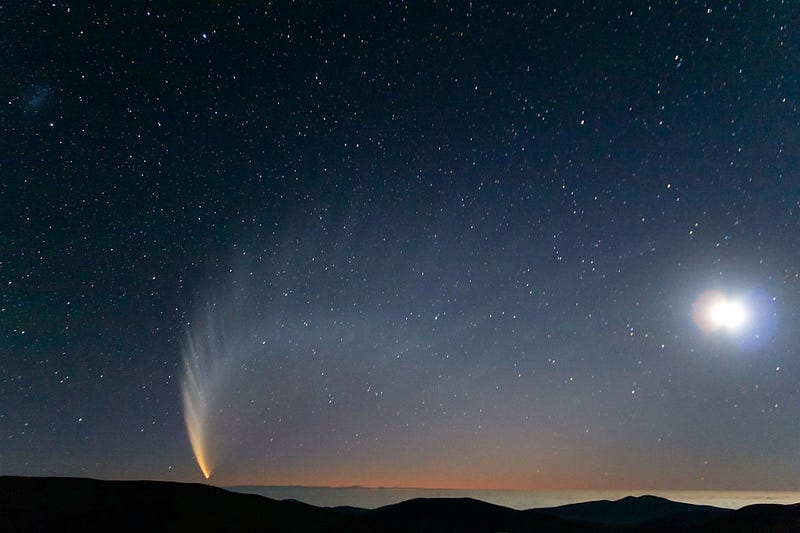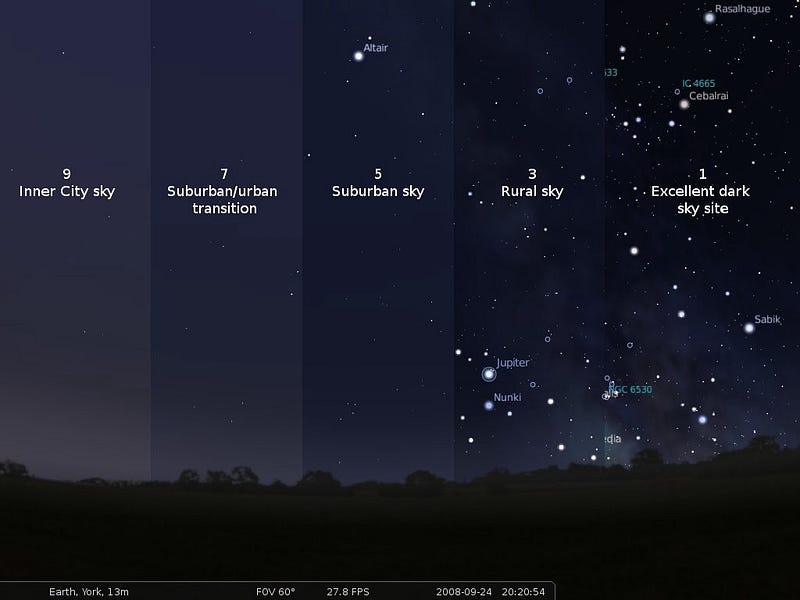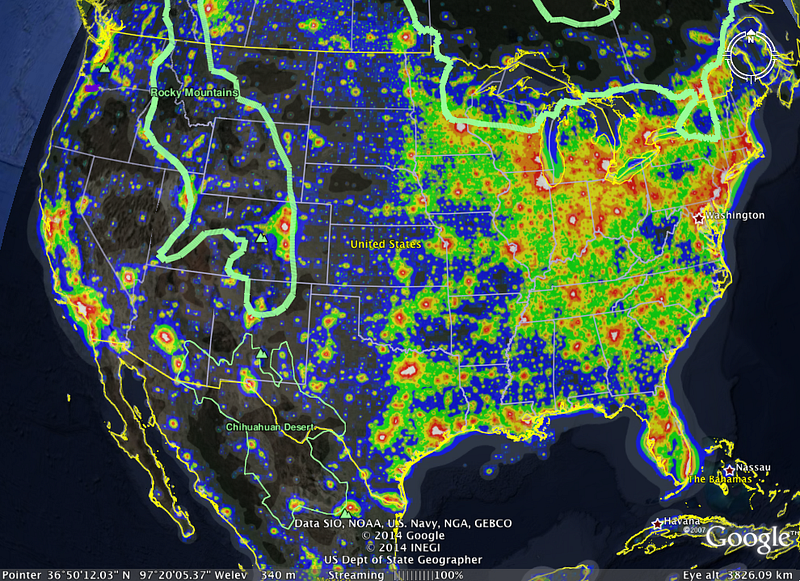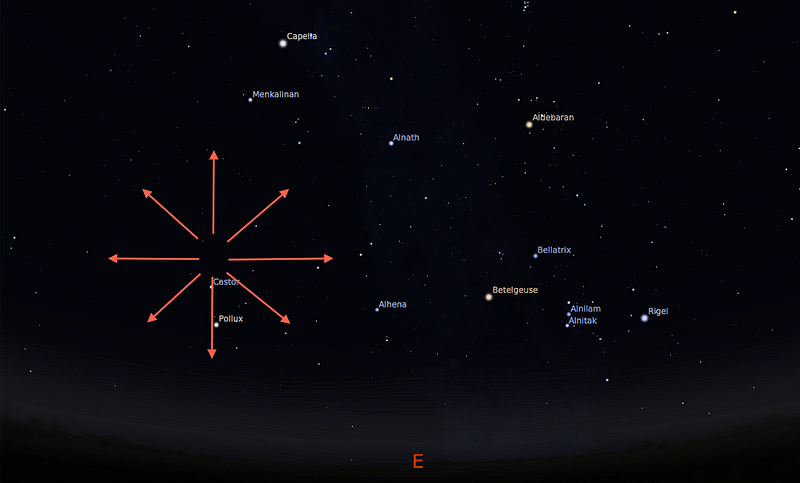Your Guide To The Best Meteor Shower Of The Year: The Geminids
Clear skies? Go out and watch! Want a better show? Read on!
“Every moment of light and dark is a miracle.” –Walt Whitman
When it comes to meteor showers, most people hear about one, walk out into their backyard for five minutes and look up, don’t see anything, and go inside disappointed. A big reason for this is that most meteor showers aren’t as spectacular as the photos or drawings we commonly see would lead you to believe.
But the story of where meteor showers come from, how they impact Earth, what causes their activity and how to maximize what you can see is a story that needs to be told. By the time you’re done with this little article, you’ll know how to make a show “worth it” for you!
It all starts with either a comet or asteroid that gets hurled into the inner Solar System, close enough to the Sun to sprout a tail.

Don’t be fooled by a common misconception: the tails themselves aren’twhat give rise to meteor showers at all. Because the Sun blows the tail particles directly away from where the comet is located, they’re not coherent enough to cause a “shower” if and when they do ever collide with Earth again. These tiny dust grains wind up as part of the micrometeroids populating interplanetary space, but play no other special role in our cosmic neighborhood.
But due to the tidal forces from the Sun and other massive bodies in the Solar System, the nucleus of the comet gets stressed, causing tiny pieces of it to break apart. Thanks to the infrared imaging capabilities of the Spitzer Space Telescope, we’ve actually seen this in action!

The little dust grains — the particles between the cometary fragments — wind up getting stretched out over the entirety of the comet’s (or asteroid’s) elliptical orbit over time. In the rare occasions where the orbital path of such a comet or asteroid actually crosses the orbit of Earth, these particles will collide with our upper atmosphere.
Those of you who remember your introductory physics class might recall a formula for the kinetic energy of a moving body: KE = ½mv2. Even though the masses of these individual dust grains are tiny, from about the mass of a grain of sand up to a small pebble, they’re hurtling through space at tens of thousands or even hundreds of thousands of miles-per-hour (or meters-per-second) when they strike our atmosphere. That “squared” on the velocity makes a big difference!

When a strike does occur, we see a streak of light lasting a fraction of a second (or more, if it’s a particularly large fragment), known as a shooting star or a meteor. There are three things that make a shower spectacular from your point of view:
- How frequent the meteors are, which has everything to do with the density of the particle stream that the Earth passes through.
- How bright the meteors are, which depends a little bit on the size of the fragments, but which depends much more on the speed of the fragments.
- And finally, how visible the meteors are, which depends on how dark your sky is.
The first one is something we can pretty much fully predict; we understand the physics of most of the particle streams, and so we have an excellent ability to predict the big meteor showers of the year. In general, the Perseids (in August) and the Geminids (in December, peaking this year on the nights of the 13th/14th) are the most reliably frequent.

The second one — how bright the meteors are — is something we canpartially predict. Because we know the orbits of the comets and asteroids that give rise to the showers, we can fully predict how fast they’ll be moving when they strike Earth, and hence we know their velocity. But the masses are a bit of a different story; the physics there is complex, and the difference between a 0.1 ounce chunk of rock and a 1.0 ounce chunk of rock is a factor of 10 in energy. That’s why, above, you see a range of brightness in meteors. Sometimes, the brightness or faintness of a shower can surprise us, solely because of the size of the particles!
But the third one, how visible the meteors are, is subject to the amount of light pollution, both natural and artificial, in the sky.

The difference between a pristine, dark sky and an urban, light polluted sky is absolutely tremendous. The brightest, most infrequent meteors can still be seen from a badly polluted sky, but they’re not very spectacular. On the other hand, a very dark sky can result in you seeing ten times as many meteors, with the brighter meteors appearing much more spectacular! (If you’re wondering, a full Moon can turn a dark sky from a “1″ into an “8″ on the Bortle Dark-Sky Scale, above.)
To find a dark-sky location near you, you can either download an overlay for Google Earth or (if you’re in North America) use this free online tool. In my experience, green or better (where blue or grey is better) is where you want to be for meteor watching.

While the biggest meteor storms in history — like the once-every-33-year peak of the Leonids — can give us up to 1,000 meteors per hour, where a meteor flies through the sky every 3–4 seconds on average, this level of activity is exceedingly rare. More commonly, a good meteor shower will give rates of around 60–200 meteors per hour, which means you’ll see one-to-three per minute, if conditions are favorable. The spectacular images you often see (like the one below) are time-lapse images, often over the course of multiple nights, where a slew of meteors are composited together. But seeing multiple meteors at the same time should never be what you expect; when it happens, it’s incredibly rare!

Seeing a bright light zip rapidly across the heavens might not seem like something so special, but when you consider the tremendous cosmic story it takes to bring us such a sight, it’s worth appreciating. Even if you don’t see a one, spending time with a dark sky gives you an appreciation unlike any other. If you’ve got the time next Sunday or Monday nights, wait until the crescent moon sets and head out to a dark sky location. Find the constellation of Orion and trace the bright blue star (Rigel) to the bright red star (Betelgeuse) and keep going until you’re just above the bright “twin” stars, Castor and Pollux.

This is the radiant, or the point from which all the meteors will emerge. Every meteor shower has one, and this one’s named the Geminids because the radiant occurs in the constellation of Gemini, the twins, which in this case is named for the twin stars: Castor and Pollux. Although you can look anywhere in the sky for meteors, you’re likely to see more if you look a little bit away from the radiant, watching for meteors emanating from that point in the sky. The Geminids should peak at about 140 meteors-per-hour, which are more numerous but slightly less bright than the Perseids, since they move a little slower.
If you’ve got clear, dark skies, get to know them this December. It’s a reward and a natural wonder unlike any other.
Leave your comments on our forum, support Starts With A Bang here on Patreon, and pre-order our book, Beyond The Galaxy; the 1st chapter is free!





